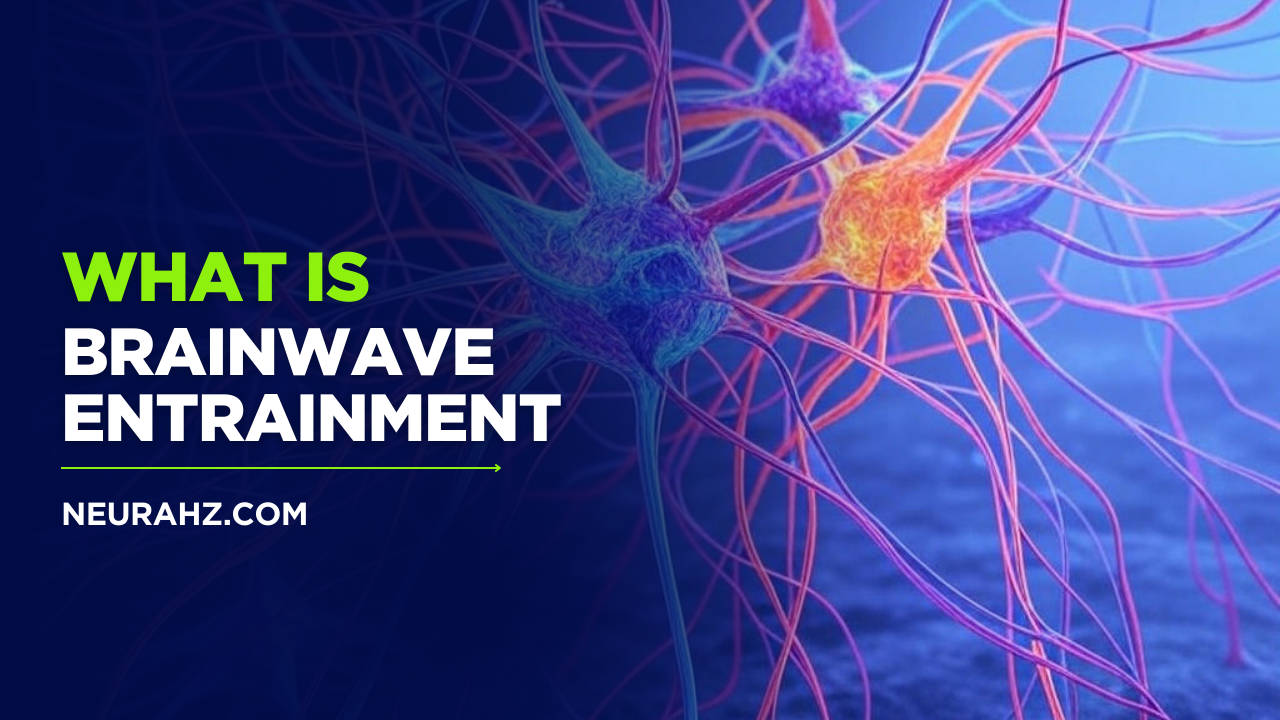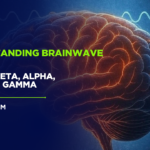Note: I’m mainly a researcher, not a professional writer, and English isn’t my first language. Please excuse any grammar mistakes or unpolished phrases you might find.
Brainwave Entrainment
The working of brain is similar to that of like a computer, sending out small electrical signals called brainwaves.Think of these waves like a secret code of the brain. They keep changing depending on what we are feeling, thinking, or doing and there’s a way to listen to these brainwaves or even control them.
That’s the idea behind brainwave entrainment. It’s about how brain can sync up with external rhythms. At Neurahz, we’re trying to know how frequency and vibration play a role in shaping our thoughts and feelings. Like a bridge between the world around us and the world inside our heads.
Before exploring how entrainment works, it’s important to understand that the brain already operates at different frequencies naturally. Please check out my article on Brainwaves for detailed information, but for a quick summary, here are the five frequencies our brain operates on –
Delta (0.5–4 Hz): Deep sleep
Theta (4–8 Hz): Daydreaming, meditation
Alpha (8–12 Hz): Calm focus, flow states
Beta (13–30 Hz): Active thinking, decision making
Gamma (30–100+ Hz): Insight, complex problem solving
The balance and interaction of these waves shape how we feel, think, and perceive reality.
Entrainment
In physics, entrainment is when two separate systems that are moving or vibrating on their own start syncing up after being close to each other or interacting for some time. For example pendulum clocks hanging on the same wall slowly start swinging together. This was first noticed by a Dutch scientist named Christiaan Huygens back in the 1600s.
This natural habit of rhythms syncing up, different patterns matching each other is not just interesting but also very efficient. It helps avoid clashes, saves energy, and brings things into a more organized state. Nature seems to like synchronization because it creates order out of chaos.
In the brain, entrainment happens when a consistent external frequency causes neurons to begin firing in sync with it. This effect doesn’t force the brain to act differently, it gently encourages it to align. Depending on the frequency used, the mind may shift into a calmer, more focused, or more meditative state.
Binaural Beats
One of the most widely recognized forms of frequency entrainment is the binaural beat. This occurs when two slightly different frequencies are played in each ear, such as 210 Hz in the left and 200 Hz in the right. The brain interprets this difference as a single pulsating rhythm with a frequency of 10 Hz.
This internal frequency, known as binaural beats, can correspond to a specific range of brainwaves. For instance, a frequency of 10 Hz falls within the alpha range, which is commonly associated with relaxation and gentle focus.
Listeners have reported feeling calmer, more creative, or clearer headed after listening to binaural beats. Studies have indicated that binaural beats can reduce anxiety in certain cases, and preliminary trials suggest potential benefits for sleep, stress, and attention, though the results can vary widely from person to person.
Isochronic Tones
Isochronic tones are another method of auditory brainwave entrainment. Unlike using two frequencies, these tones rely on a single tone that pulses on and off at a specific rhythm, like a metronome for the brain.
Is Brainwave Entrainment Reliable?
The effects of auditory and visual entrainment are promising, but they’re not always the same for everyone. Some people feel clear and peaceful after listening to a certain frequency, while others don’t notice anything at all. It seems like the placebo effect, personality traits, brain’s architecture, and even the environment we’re in can all play a role in how we respond.
Neuro imaging tools like EEG and fMRI confirm that external rhythms can cause localized changes in brainwave patterns. However, these effects are usually temporary. Long-term brain rewiring, such as forming new neural pathways, likely requires repetition, emotional engagement, and deeper behavioral reinforcement.
Still, the principle stands: frequencies affect the mind. Whether through subtle entrainment or more powerful neurostimulation, the brain is responsive to rhythm.
Brainwave entrainment is like a scientific experiment that shows how external sounds can affect our thoughts and feelings. It’s like our minds and the world are connected, and when we listen to certain sounds, our brains start to match their rhythm.
I think this idea goes beyond. It might be in how the brain makes connections, how it recovers from trauma or learning, and even how it creates the patterns of consciousness itself.


